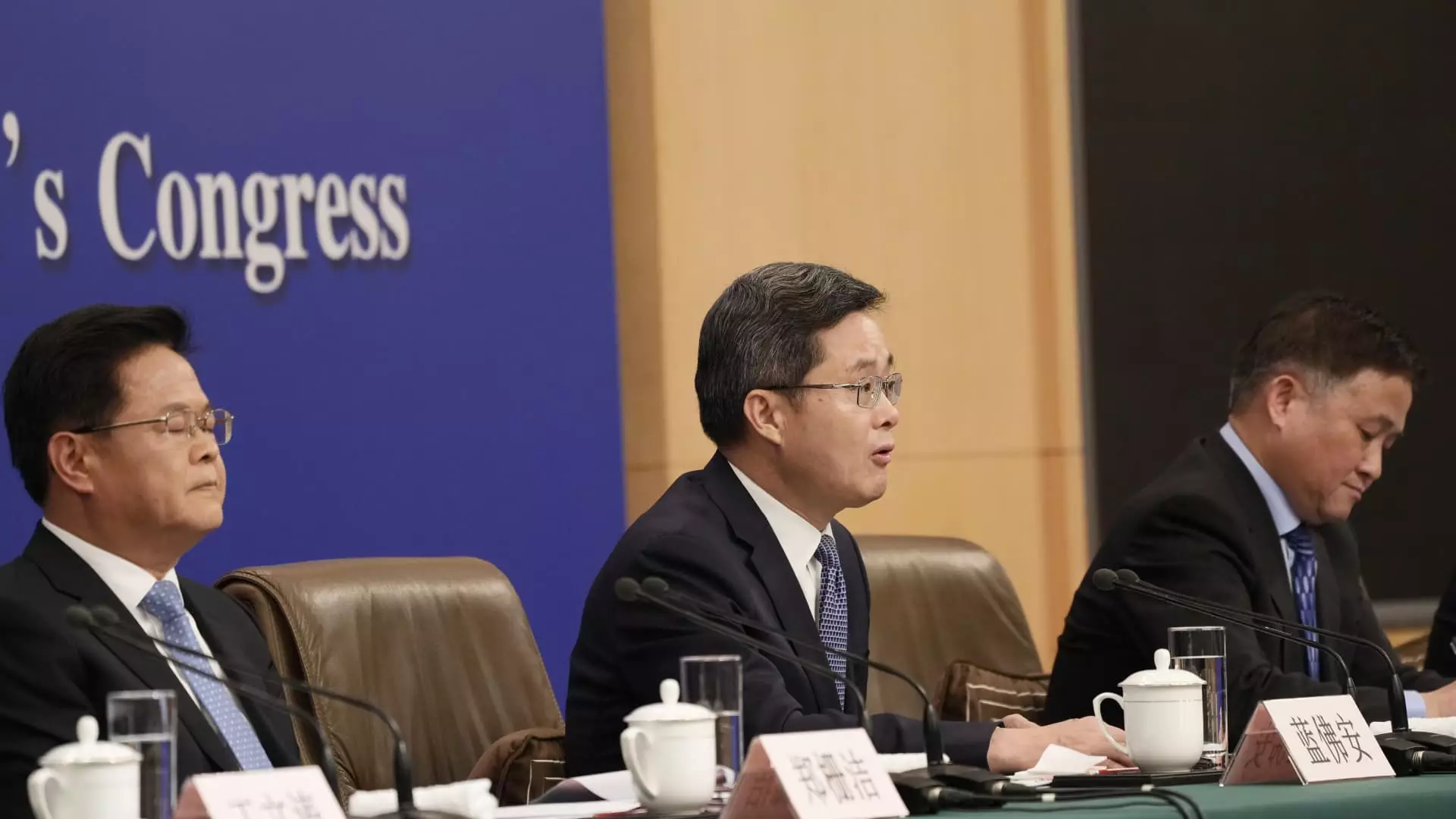China’s economic landscape has been characterized by significant challenges in recent years, with a particular focus on debt management and fiscal policy. The remarks made by Lan Fo’an, the Minister of Finance, during a recent press conference shed light on the government’s current stance toward increasing fiscal measures. Lan emphasized that there is potential for the central government to expand debt and increase the budget deficit, indicating a willingness to adopt more aggressive fiscal policies to stimulate economic growth. However, the details surrounding these policies remain murky as discussions are still underway.
Economic analysts have often pointed out the necessity for enhanced fiscal support to mitigate the challenges faced by local governments, particularly concerning mounting debt risks. These risks have been particularly pronounced in the real estate sector, which has experienced a significant downturn. The government’s commitment to supporting major state-owned banks and initiatives aimed at bolstering youth employment reflects a broader strategy to tackle these pressing issues. However, the absence of any concrete announcements following recent high-level policy discussions has left economists and market analysts on edge.
The Call for Fiscal Stimulus
In late September, discussions presided over by President Xi Jinping highlighted the need for stronger monetary and fiscal policy interventions. Despite this acknowledgment, the specifics of these policy implementations have yet to be detailed. The calls for fiscal stimulus come on the heels of a concerning economic performance. China’s GDP growth rate stood at 5% in the first half of the year, falling short of the target of approximately 5% for the full year. Such statistics raise concerns about the overall economic trajectory, especially as retail sales report only modest growth levels.
Estimates regarding the amount of fiscal stimulus required to counteract current economic headwinds range widely, with figures fluctuating between 2 trillion yuan to a staggering 10 trillion yuan. This disparity underscores the uncertainty surrounding the government’s fiscal trajectory and its capability to inject enough capital into the economy without exacerbating debt levels. Notably, any proposed economic stimulus package requires parliamentary approval, which complicates the timely execution of these measures given the upcoming parliamentary sessions.
The financial markets have reacted to these developments with volatility. Following the reopening of mainland Chinese markets after a week-long holiday, stock performances fluctuated significantly, demonstrating investor apprehension regarding the effectiveness of any stimulus measures. This erratic behavior echoes earlier patterns observed when major policy announcements led to a brief market rally, only to dissipate quickly, pushing indexes back to where they were several weeks prior.
One noteworthy observation surrounding these developments is the pattern established following the Federal Reserve’s monetary easing. The People’s Bank of China (PBOC) had also taken steps to cut interest rates and extend support measures for the struggling real estate sector. Such actions were designed to increase liquidity in the market, particularly for investments in real estate and stock sectors, with initiatives like allowing institutional investors to borrow funds for stock investments aimed at invigorating the equity market.
As the National Bureau of Statistics prepares to release third-quarter GDP figures, there is palpable apprehension regarding whether China can meet its annual growth targets. Any solid indication that economic recovery is underway will be essential for bolstering market sentiment and restoring confidence among investors. The government’s mixed signals regarding the implementation and scale of fiscal stimulus will play a crucial role in shaping economic forecasts and investor outlooks.
The pressing question remains: will the Chinese government adopt an effective strategy that focuses not solely on stabilizing dwindling local government revenues, but also on stimulating consumer demand? As China’s economic challenges continue to evolve, the coming weeks will likely be decisive in determining the effectiveness of government initiatives aimed at fostering sustainable economic growth. The necessity for a balanced approach, one that addresses immediate stability while also creating an environment for long-term growth, will be vital in the efforts to navigate a complex economic landscape.

